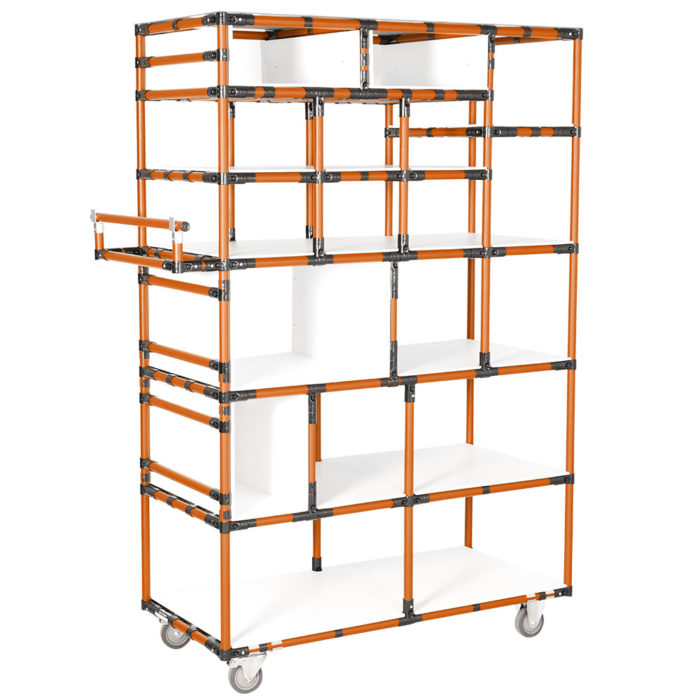
Technical Data
HOW TO CALCULATE THE LOADING CAPACITY FOR MODULAR STRUCTURES
Structure
WORKSTATIONS
Structure
FLOW RACKSShelving is shelving, right? Well, there’s more to it than that. There are the basic shelves from hardware stores that hold plastic boxes and bins—and then there’s the modular system with which you can create custom-made racking to meet your specific needs. Entirely adaptable, modular racks shield your parts from potential damage and free up precious floor space – sound appealing?
The racking can be adapted to the exact size you need, fit into the designated location you have available. They can be designed to accommodate odd shapes such as cutting dies, WIP bulk parts, and raw materials. Our Learning section will show you how to create racks and calculate loading capacity.
Read on for more about the four common types of racks you can build with material handling systems.
Warning: Flexpipe is not intended to replace high-density pallet racking.

A modular system is the ideal product to make prototype racking, simulate equipment space, and especially to create temporary racking that needs to be changed often changed. Automotive manufacturers have been using the pipe and joint system for decades to fit multiple product changes as they needed racking to be adapted continuously.
Furthermore, if you’re planning to use racks only temporarily or on a seasonal basis, you can use what we call stack racks. You can create this type of rack by adding Flexpipe’s stacking accessories such as the AF-STACK or the AC-SKID. According to the structure design, you should be able to stack up to 3 racks high.

If you need to buy shelving to store boxes, bins or raw material, why not custom-make the shelving instead? Though it may be a bit more expensive and time-consuming than a commercial off-the-shelf product, the advantages of a tailor-made shelf far outweigh the disadvantages.
Custom-made shelving will be space-efficient, ergonomic, durable, part protective and 5S oriented. We’re talking about a top-notch custom shelf with all the 5S features you could need: a place for everything and everything in its place!

The WIP (Work in Progress) rack is used to store products that are between two manufacturing steps. With a pipe and joint system, you can build racks with compartments specifically sized for products at different intervals in the production process.
If properly designed and assembled, these racks should prevent your parts from being scratched and will reduce defects. They can free up precious floor space, too!

The beauty of a modular system is that it enables you to create storage racks that are designed for a unique piece. That means that any other product or component wouldn’t fit on this rack. Perhaps you’ve seen the toy where kids insert square, circle, triangle-shaped parts into a block? This toy is meant to help kids learn the shapes and the concept of matching similar shapes together. It’s the same principle for our racks: you put the part in the space created specifically for it.
Custom storage racks are efficient and can serve as a mistake-proofing system or “poka-yoke” in Japanese. If you’re doing it right, adjusting your racking structures to your components and product’s size or shape will also allow you to save space on your production floor.